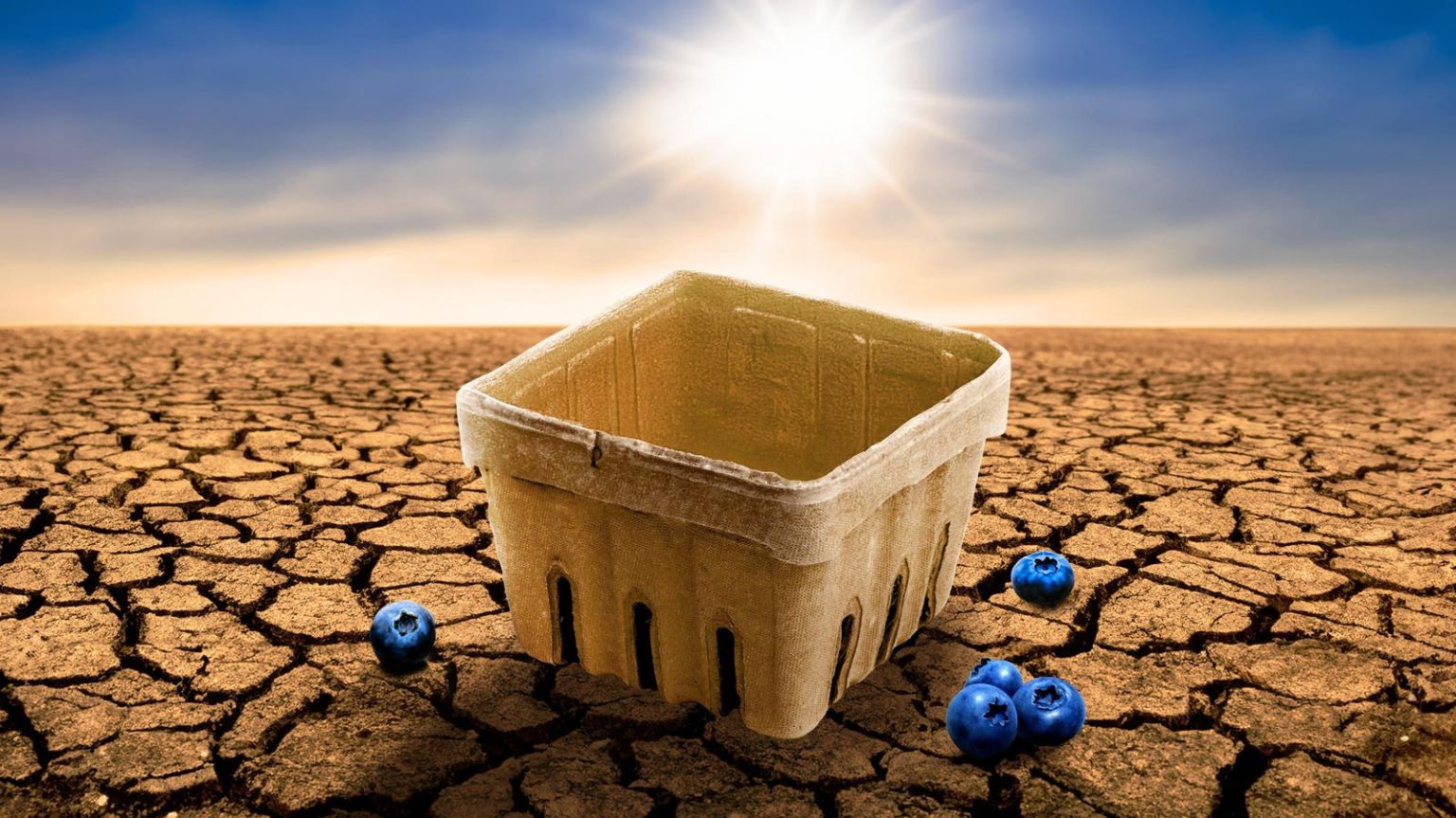This year’s El Niño weather pattern has hurt Peru’s crop of blueberries, cutting the supply making it to America roughly in half.
By Chloe Sorvino, Forbes Staff
A shortage of blueberries has hit supermarkets across America.
The scarcity stems from a lackluster blueberry harvest in Peru: Nearly half as many blueberries from Peru reached American stores last week, compared to the same week last year. The supply has dropped as much as 70% in the past month.
“People don’t like to not have their blueberries,” says Kasey Cronquist, the president of both the U.S. Highbush Blueberry Council and the North American Blueberry Council. “The enthusiasm for blueberries is still super high, even though there is a low supply.”
Extreme heat left behind from this year’s El Niño weather pattern, where higher sea surface temperatures force warm air to rise into the winter atmosphere, has turned disastrous for the blueberry crop in Peru, the largest blueberry exporter in the world. Since Peru sends the U.S. about a third of its total blueberry supply of 1.3 billion pounds, it’s been difficult to source blueberries across American grocery stores.
That’s pushed up prices. Since the beginning of September, retail prices are up 60% to nearly $6 per pound, according to NielsenIQ, which scans the majority of receipts across U.S. retail stores. In the past two months, blueberries have increased $2 per container. Some 27 million pounds less have sold compared to last year.
“They were having an endless summer in Peru, and, for blueberries, that has had a consequence,” says Cronquist. “This is the first time in this industry’s history where we have had such a large contraction of supply, because of how big Peru has gotten, globally.”
The first time Peru sent more than one million pounds of blueberries to the U.S. was in 2013. Growing blueberries in Peru has been expanding ever since, and Peru became the main supplier to the U.S. market in 2020. In 2022, the U.S. imported 339 million pounds of Peruvian blueberries, up nearly ninefold since 2016.
But blueberries need cooler temperatures, and without that, the bush may not grow fruit. That’s led to less blueberries harvested this year. At the same time, blueberries have become an increasingly popular fruit, with American consumers competing with new demand for blueberries in Europe and Asia.
“The consumers want what they want – blueberries year-round,” says Cronquist. “This is a crop that’s highly dependent on mother nature.”
The blueberry industry has been working to figure out the breeds of blueberries that are naturally the most resistant to heat. Cronquist says that will be a key to ensuring a strong blueberry supply as climate change gets worse.
Cronquist expects the blueberry supply to return to its previous levels by the spring, once the North American blueberry growing season starts. It’s still unclear, he says, whether El Niño will hurt next year’s harvest, too.
MORE FROM FORBES
Read the full article here





